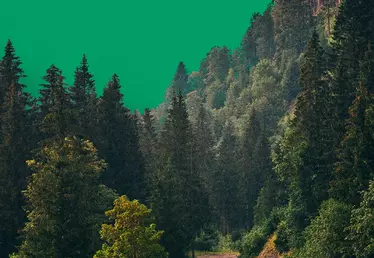

Hero banner custom title
Plants are climbing mountains because of climate change
5 min
On the slopes of Mount Chimborazo in the Andes, scientists studied how plants actually climb to higher altitudes in order to avoid warmer temperatures.
In the face of global warming, mountain plants are starting a slow race to higher altitudes in an attempt to reach milder temperatures. In the tropics, this race is even faster than in temperate areas. This was observed by Naia Morueta-Holme, researcher at the University of Copenhagen, on the slopes of Mount Chimborazo, a 6,263 meters-high volcano in the Andes.
The team of scientists scoured the slopes of Ecuador's highest mountain, keeping tracks of every plant they could find on small plots located at 100-meter intervals between 3,800 and 5,200 meters in altitude: species, distribution, upper vegetation limit, etc. They were then able to compare their observations with the historical data collected by Alexander von Humboldt, a famous German naturalist, geographer and explorer, who had himself explored the Andes two centuries earlier and made a census of all the plants growing there. Despite the uncertainties inherent in these old data, collected from 1802 onwards, results are both solid and surprising. “We were able to document plant migrations to heights of over 500 meters on average,'' says Naia Morueta-Holme. We were surprised to discover such significant migrations given the climate warming that we are experiencing in this area”.
However, not all species are equal.
“The two highest species found, a mustard, Draba aretioides, and an aster, Pentacalia chimborazensis, grew well above the upper limit of plants that Humboldt noted, which at the time was 4,600 meters above sea level”.
Plants are indeed moving, but they are not moving fast enough
Will these migrations be enough to ensure the survival of these mountain plants against climate change? It is still very hard to say. “Because species respond in very different ways, with some climbing to higher altitudes, some staying put, and even some moving back down, we still have a lot to learn. This success will also depend on interactions between species, and between plants and pollinating insects, explains Naia Morueta-Holme. In any case, there will be winners and losers”.
An advantage for this high-altitude flora is that warming is leading to the melting of the glaciers that cover the Andean peaks, opening up new colonization fronts where some species are already settling. Further down, human activities could also explain the speed of these migrations, by disseminating certain species. In contrast, human presence can also hinder these migrations. « Species have already migrated in response to climate change in the past, between the ice ages and interglacial periods. But today's landscapes are very different, with large areas devoted to agriculture and a fragmentation of habitats making their movements more complicated”, notes Naia Morueta-Holme. Furthermore, the current rate of warming, caused by CO2 emissions due to human activities, is very rapid, challenging the ability of plants to keep up with this unprecedented rise in temperature.
Lastly, although species may migrate to higher altitudes, sooner or later they will be confronted with the unsurpassable limit of the peaks. Local extinctions have already been observed in some mountains.
According to a scientific article published in Nature, which reviewed 150 high-mountain species in the Alps, population dynamics are lagging behind climate change. The range of these plants will have almost halved by the end of the 21st century.
Many species are therefore moving towards probable extinction in the long term. According to another study published in PNAS (Proceedings of the National Academy of Sciences) on 538 animal and plant species worldwide, a large majority (57-70%) of them will not migrate fast enough to survive. However, they could also adapt to new niches, new ecological conditions, thus increasing their chances of survival.
In this case, however, 16 to 30% of the species studied could disappear by 2070 due to climate change.











